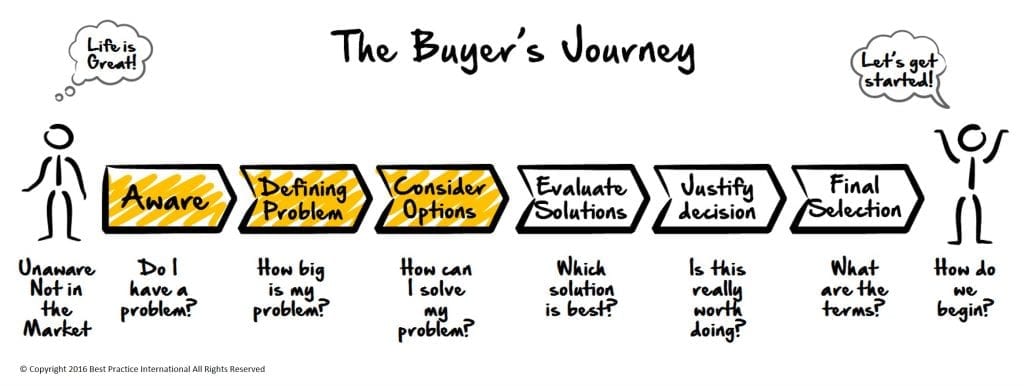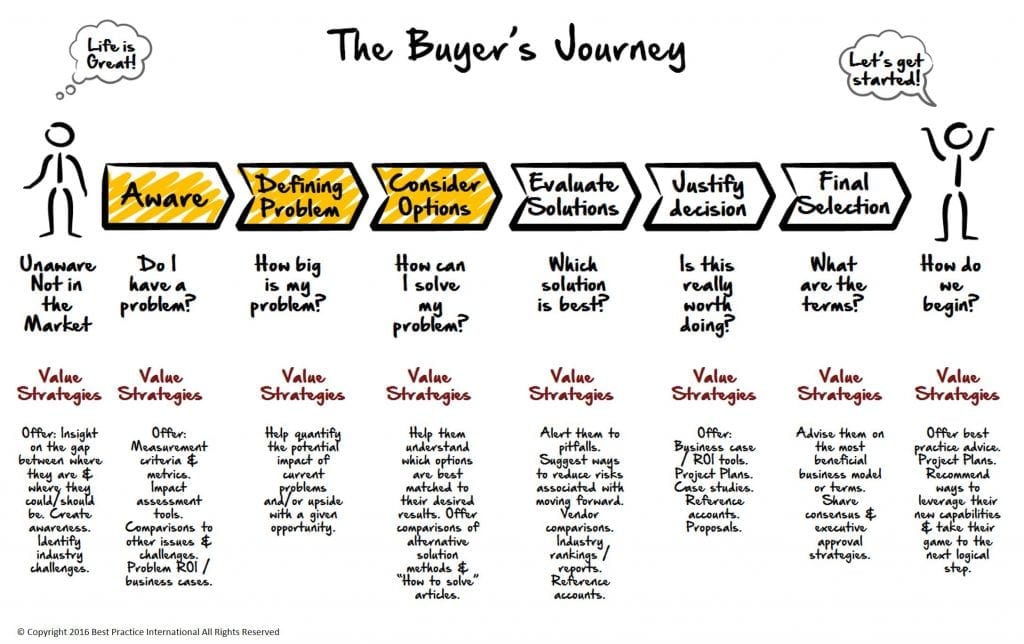Are You Making This Classic Sales Conversation Mistake?
It’s easy to say that you should add value to every encounter, but it’s quite another to offer you concrete ways of how to actually go about doing that. Our next series of posts does just that.
The Most Common Mistake to Avoid
It’s a cardinal sin to meet with a prospect or client with no defined purpose. Each meeting should have at least two purposes:
- A compelling business reason—your answer to “Why should this client see me?”
- A plan to deliver added value.
Without a defined purpose you are wasting their time (as well as your own). If you are “just checking in” or “touching base,” stop it. Nothing telegraphs that you have nothing valuable to offer or that you really only care about them purchasing something than an encounter with no purpose (e.g., “just checking in” or “touching base”). When you do this, you’re just praying the time is right for them to buy. Since that’s the case, why not just say so? “Hey Bob, are you going to buy something already or not?” Because your customer knows the real reason you are contacting them.
The Key to Adding Value is Preparation
Being thoughtful and deliberate about how you plan to deliver value before each meeting is the key to adding value on every encounter. Do not try to add value on-the-fly. That’s winging it, and professionals do not wing it.
In an upcoming post I will share forms that you can use to help you prepare, but a good old piece of paper and pencil can do the job just as well. This process complements any of the sales methodologies out there you might already be using.
Know The Stage of the Buying Process Your Prospect is In
Buyers go through eight distinctive stages whenever making a purchase.
- Unaware
- Awareness
- Define Problem
- Consider Options
- Evaluate Solutions
- Justify Decision
- Final Selection
- Implementation
Buyers ask and gather answers that are distinctive to each stage. Knowing what stage your prospect is in prepares you to maximize the type of value you bring.
Consider the context of where your prospect is in their buying process. For example:
If they are still only realizing that there is a need for change, then you might offer insight as to the gap between where they are and where they could be or should be.
- If they are aware of certain challenges but those problems are not crystallized in their minds, you might help them quantify the potential impact of their current problems or the upside with a particular opportunity.
- If they have quantified the upside potential, you might help them identify various options or trade-offs to consider in order to achieve their desired outcome.
- If they are considering a few specific solutions, you might help them understand which are best matched to their desired results.
- If they have identified a particular path to achieve their goals, you might help them outline the plan or steps they need to take to reach their goal.
- If they are settled on a particular approach or solution, you might alert them to pitfalls to avoid and suggest ways to reduce risks associated with moving forward.
- If they are at the stage of finalizing their decision, you might share strategies to get executive approval and advise them on the most beneficial business model or terms.
- If they are preparing to implement a given solution or approach, you might recommend ways to leverage their new capabilities once the new solution is employed, and how to take their game to the next logical step.
The Classic Conversation Mistake
This is a big deal. There are infinite ways to add value at any stage of the buying cycle. The point is to be cognizant of where your prospect is, so you can offer the kind of value they will consider the most important at that stage. I cannot even count the number of times I’ve witnessed a conversation where the salesperson is speaking to why their solution is the best compared to others when the customer is still not sure they even have a problem worth solving. This is a classic sales conversation mistake.
“There are infinite ways to add value at any stage of the buying cycle. Be cognizant of where your prospect is, so you can offer the kind of value they will consider the most important at that stage.”
To guide your thinking as you plan each encounter, ask yourself, “What stage of the buying cycle is my prospect/client in?” Then ask, “What would they consider most valuable at this stage?”
Here is a helpful graphic that illustrates some of the value strategies you can employ at each stage of the buyer’s journey. Click the image to enlarge.
Use The Buyer’s Stage to Add Unexpected Value.
Use your emotional intelligence and be cognizant of where your customer is in their buyer’s journey. This knowledge will prepare you the best areas to focus on for that customer. Being sensitive to where they are in their thought process prepares you hit the bulls-eye with your value message and signals to your customer that you are a consultant, facilitator and trusted adviser. This is a special and important place to be. Not only does it statistically improve your odds of winning the sale it’s a great deal more satisfying as well.
Closing Tip: Use the buyer’s stage to add unexpected value.
Until next time!
James


